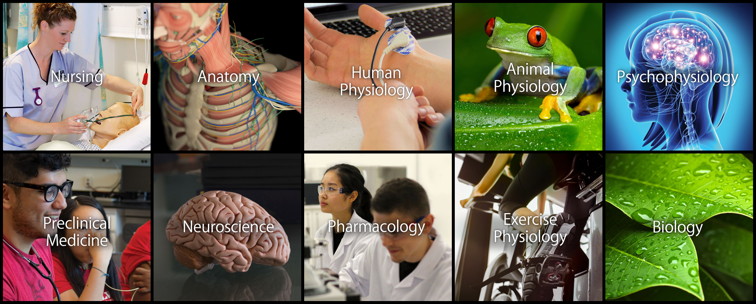

ADInstruments and Vernier® Science Education have partnered to create the Lt Biology Collection, which has been designed to encourage undergraduate biology students to work in the higher levels of Bloom’s Taxonomy.
Bloom’s taxonomy is a way of classifying learning outcomes (and, increasingly, assessment questions) by the cognitive skill level required to achieve or answer them.
However, 93% of assessments provided by 50 educators teaching introductory biology courses in the United States were found to only target Bloom’s levels 1 & 2 - knowledge and comprehension - the lower cognitive levels.
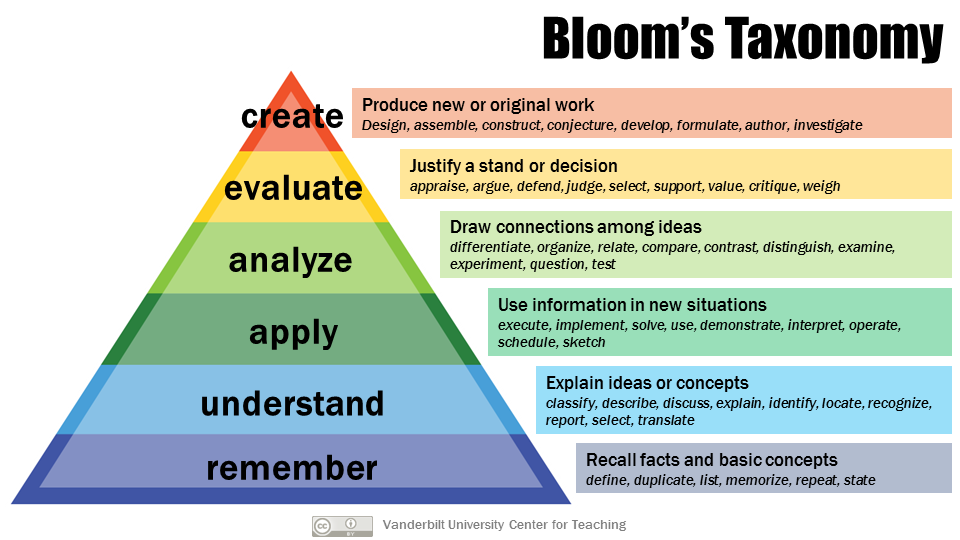
Bloom’s taxonomy (from Center for Teaching Vanderbilt University, licensed under CC BY 2.0. No changes have been made).
To help to encourage students to work in the higher levels of Bloom’s Taxonomy, ADInstruments and Vernier have partnered to create the Lt Biology Collection, which has been designed with Bloom’s taxonomy in mind.
Related: Lesson Design for Future Scientists - six core competencies for undergraduate biology students »
Designed to encourage high-level thinking
Although the order of classifications in the Bloom’s framework has been revised, it is agreed that the levels themselves are scaffolded from those that require lower cognitive skills (remembering, understanding) to those that require a higher order of cognitive skill, like evaluating and creating.
During its development, each question in the Biology Collection’s labs was given a Bloom’s score. These labs endeavor to provide your students with a scaffolded learning experience, with questions ranging from those targeting basic recall and understanding, to application, analysis, evaluation, and creation.
Related: Five Tips for Teachers: How to create effective and engaging online lessons »
Bloom’s taxonomy in our labs
For example, take the Transpiration lab, which uses the Go Direct® Gas Pressure Sensor to assess the rate of transpiration in a plant exposed to varying environmental conditions. A Challenge question, given to the students early in the lab, ensures they can remember the key structures of plant stomata:
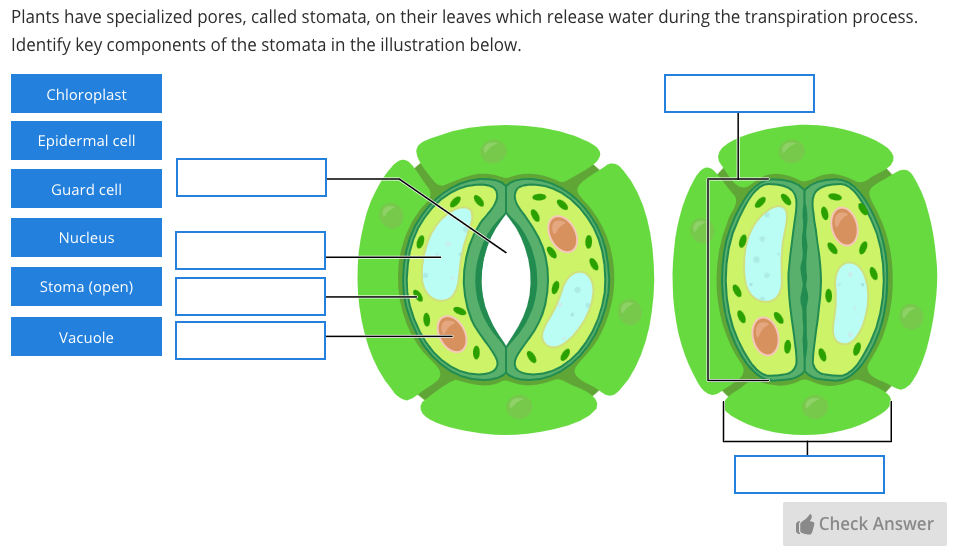
...whereas a question on the Review and Integration page in the same lab challenges students to generate original ideas to explain why different crops have varying water footprints. As a bonus, they can integrate their conceptual knowledge with a real-world, industry-based example.

Promoting scientific argumentation using the Claim, Evidence, Reasoning framework
Scientific writing requires the author to cite evidence (data) to support any arguments or claims being made, rather than their opinions. Scientific arguments are strongest when authors connect their evidence to scientific principles and acknowledge alternative explanations for their data.
Claim, Evidence, Reasoning (CER) is a tool that allows students to build logical arguments to present and defend their experimental findings. Used previously in Grades 5-8, we have used CER where appropriate in the Lt Biology Collection to encourage students to reflect on their evidence and on other factors that might explain their findings.
For example, the Aquatic Photosynthesis lab asks students to present their evidence regarding whether or not aquatic moss performs photosynthesis and/or cellular respiration in dark and/or light conditions. Students must first state their claim...

...outline their evidence, and, through reasoning, link this evidence to a scientific principle…
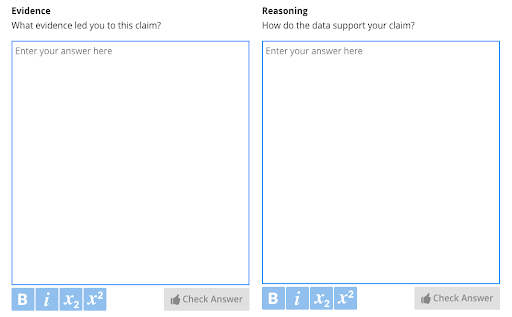
...and finally defend their argument. Rebuttal can be associated with the higher-order cognitive skill of assessment, as outlined by Bloom’s taxonomy.
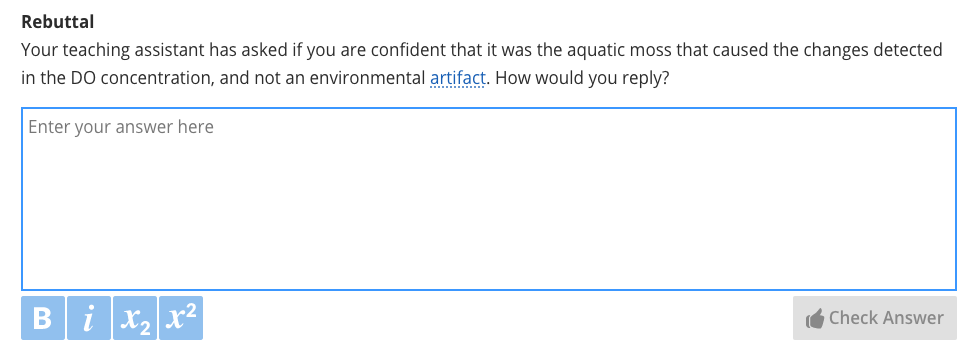
As a scaffold, CER promotes argumentation, which is agreed by the American Association for the Advancement of Science’s Vision and Change report (2011) to be a facet of scientific inquiry.
Supporting students at varying skill levels
We know that students in introductory courses can come from diverse backgrounds. With Lt’s intuitive user interface, all 34 labs in the Lt Biology Collection can be easily adapted to suit your curriculum. Built-in lab reports are an easy way to introduce students to key experimental documentation, and to make sure that they understand the scientific method.
In addition, many of the labs contain guided inquiry extensions, promoting scientific literacy by allowing more advanced students to choose and investigate their own research questions. Of course, these extensions can be removed if necessary, accommodating restricted schedules or students who lack scientific grounding.
"The photosynthesis labs on the website were perfect."
- Corban Goodman, Laboratory Coordinator, La Sierra University

At a time when the global education landscape is significantly disrupted, the Lt Biology Collection, combined with Vernier Go Direct® Sensors, provides an off-the-shelf, easily-customizable solution that will introduce students to a wide range of introductory biology topics. Book a demo to see how easy it is to get up and running with Lt for your next semester!
Try the Lt Biology Collection now...
Click here to find out more about the Biology Collection and how it can work for you. You can preview a selection of labs, or jump directly into Lt with our free trial!
Additional resources for educators:
Emergency Remote Teaching: Moving introductory biology classes online during Covid-19 »
Darwin Day and the Lt Biology Collection - Try Lt’s Population Genetics and Evolution lab! »
Keep calm and teach on: Teaching online during Covid-19 »
Future-proofing, fast: How Ed Merritt (Southwestern University) moved his lab-based course online »
10 Tips for Teaching Online – How to teach remotely and keep your students engaged »

